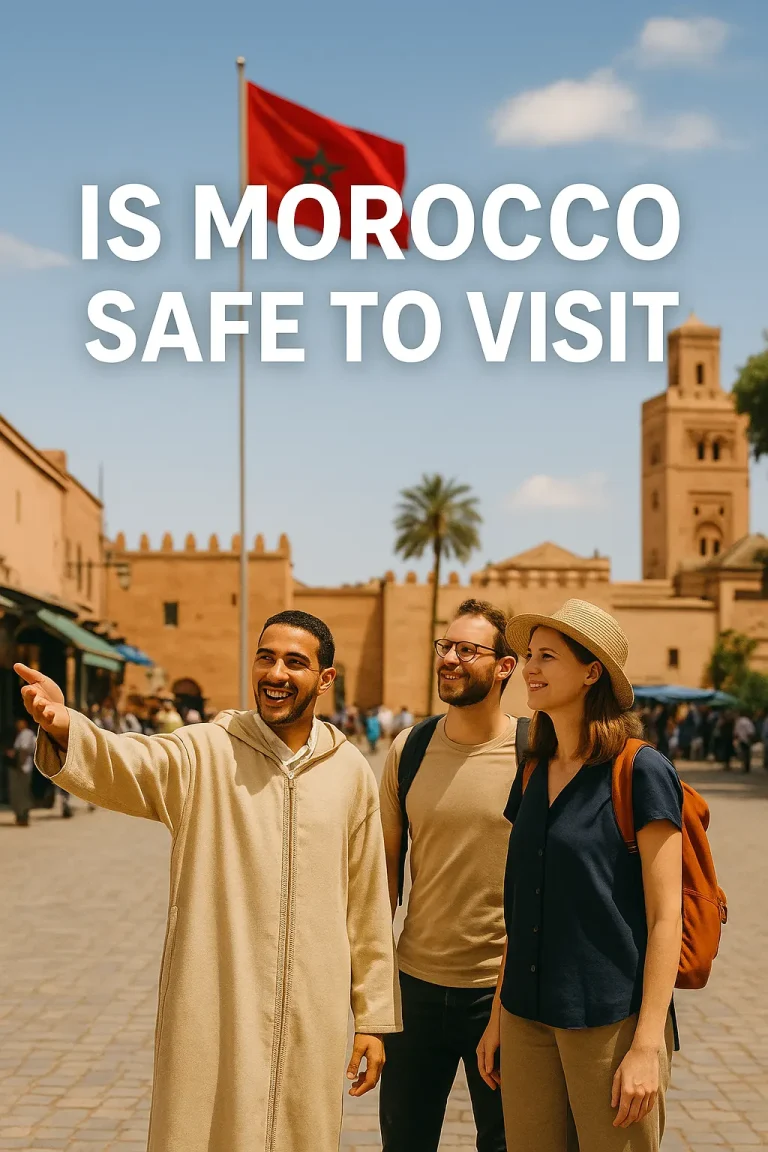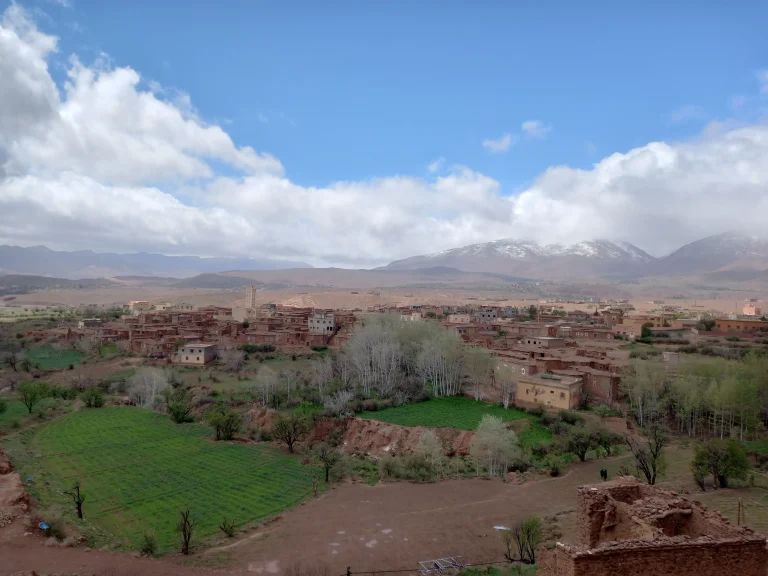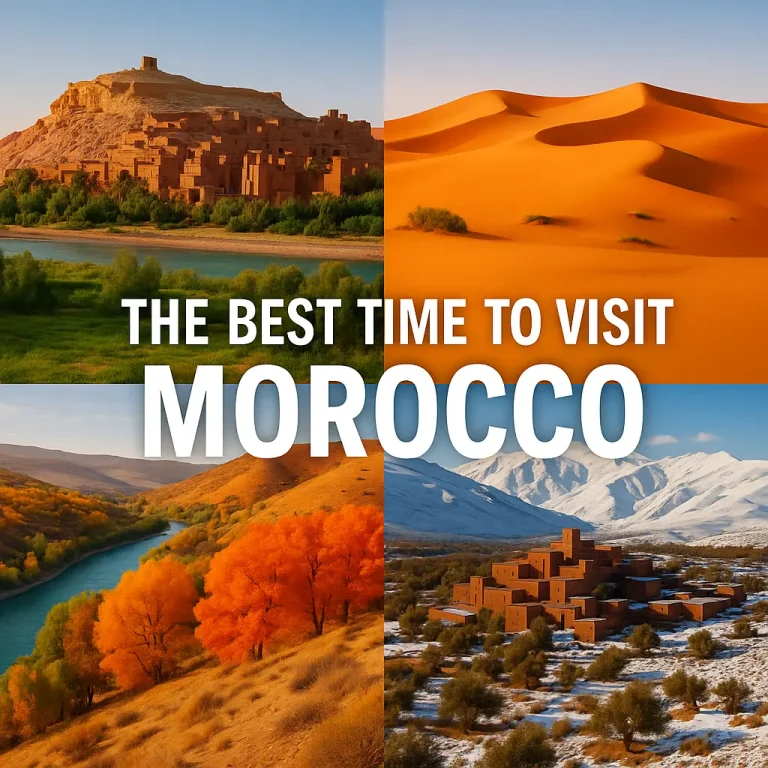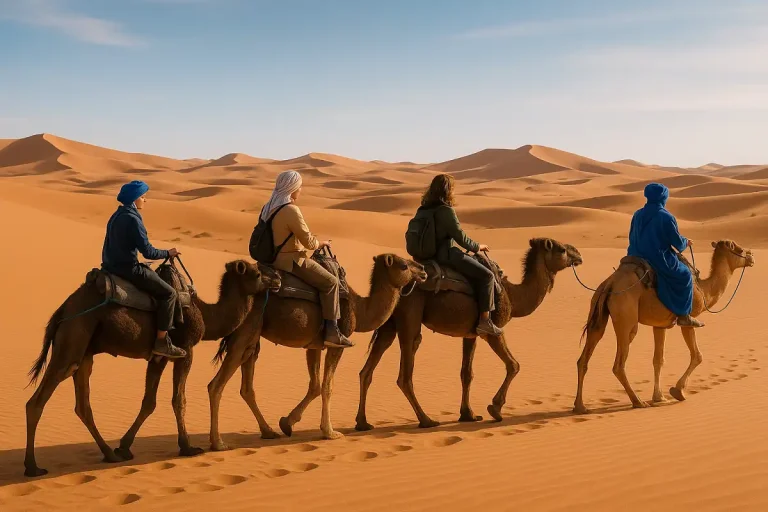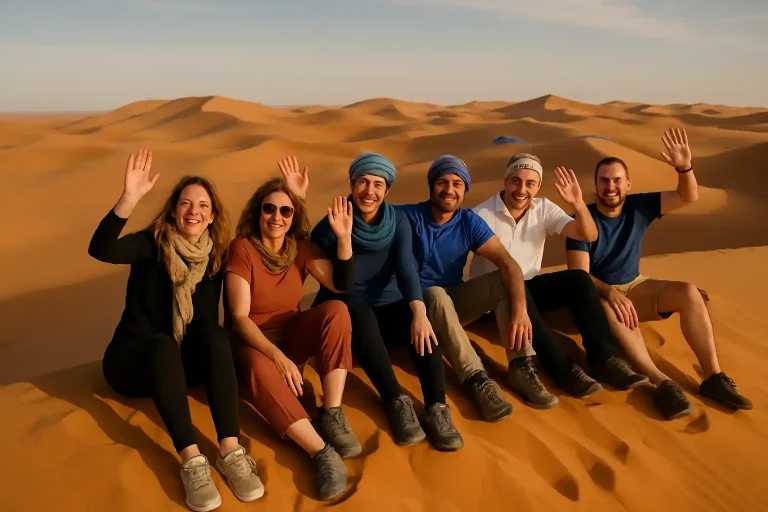Planning a 2 week Morocco itinerary from Casablanca can feel overwhelming with so many incredible places to see. From the bustling streets of Casablanca and Marrakech to the serene blue alleys of Chefchaouen, the ancient medina of Fes, and the golden dunes of the Sahara Desert, Morocco offers an unforgettable mix of culture, history, and natural beauty. A 14-day Morocco tour from Casablanca is the perfect way to experience it all — balancing the Imperial Cities, desert adventures, mountain landscapes, and Atlantic coast. In this guide, we will walk you through the ultimate day-by-day itinerary so you can make the most of your journey.
Why Choose a 2 week Morocco itinerary from Casablanca?
 ️ Easy Access with International Flights
️ Easy Access with International Flights
Casablanca is Morocco’s main international hub, with direct flights from major cities in the USA, UK, Canada, but Australia( a stop in the Middle East). Starting your journey here makes your arrival and departure stress-free. Instead of backtracking later, you can land in Casablanca, begin exploring right away, and then follow a smooth loop through Morocco’s top destinations.
⏳ The Perfect Two-Week Timeframe
With 2 week Mrocco itinerary from Casablanca, you will have just the right amount of time to enjoy the country without rushing. One week is usually too short to cover Morocco’s diverse landscapes, while two full weeks allows you to balance sightseeing with relaxation. This timeframe gives you:
- Enough time to explore the Imperial Cities of Casablanca, Rabat, Fes, and Marrakech.
- Two nights in the Sahara Desert with camel trekking and stargazing.
- Scenic drives through the Atlas Mountains and Morocco’s lush valleys.
- A relaxed ending on the Atlantic Coast in Essaouira.
🌍 A Balanced Experience: Cities, Desert, Mountains, Coast
A 2 week Morocco itinerary offers a complete picture of Morocco:
- History & Culture → Explore ancient medinas, royal palaces, mosques, and bustling souks.
- Adventure → Ride camels into the Sahara, stay overnight in desert camps, and cross dramatic mountain passes.
- Nature → Enjoy waterfalls, oases, and rugged canyons like Todra Gorge and the Dades Valley.
- Relaxation → Wind down by the sea in Essaouira before heading back to Casablanca.
This itinerary captures the soul of Morocco — not just the famous landmarks, but also the atmosphere of small towns, Berber villages, and breathtaking landscapes in between.
Morocco 14-Day Tour Itinerary from Casablanca
Day 1 – Arrival in Casablanca → Rabat
Your 2 week Morocco itinerary begins in Casablanca, Morocco’s largest city and international gateway. After arrival, you will discover some of the city’s most iconic landmarks before continuing on to the capital, Rabat, for your overnight stay.
- Hassan II Mosque – One of the largest mosques in the world, built partly over the Atlantic Ocean. Its intricate architecture and oceanfront location make it a breathtaking first impression of Morocco.
- Sacred Heart Cathedral (Église du Sacré-Cœur) – A striking neo-Gothic church built in the 1930s, now used for cultural events, showcasing Morocco’s French colonial heritage.
- Mohammed V Square – The heart of modern Casablanca, surrounded by impressive public buildings with Moorish design elements.
- Rick’s Café – Inspired by the classic film Casablanca, this atmospheric restaurant is perfect for lunch or a coffee stop.
- Corniche Ain Diab – A seaside promenade where you can stroll along the Atlantic coast and enjoy ocean views.

Day 2 – Rabat → Rif Mountains → Chefchaouen
After breakfast in Rabat, you will explore Morocco’s capital city, a place where historic sites blend with modern charm.
- Oudayas Kasbah – A UNESCO World Heritage site overlooking the Bou Regreg River, famous for its white-and-blue houses, narrow alleys, and stunning Andalusian gardens.
- Hassan Tower & Mohammed V Mausoleum – The unfinished minaret of Hassan Tower is one of Rabat’s most important landmarks, standing beside the elegant mausoleum where King Mohammed V and his sons rest.
- Royal Palace (Dar al-Makhzen) – The official residence of Morocco’s king. While visitors can’t enter the palace, you can admire its impressive gates and gardens from outside.
🚗 In the afternoon, travel north through the Rif Mountains, enjoying scenic landscapes and winding roads, before arriving in the Blue City of Chefchaouen.
🌙 Overnight stay in Chefchaouen, where you can take an evening stroll through the peaceful blue-washed streets.
Day 3 – Full Day in Chefchaouen (Optional Excursion to Akchour)
Today is dedicated to discovering the charm of Chefchaouen, Morocco’s famous Blue Pearl. Nestled in the Rif Mountains, this picturesque town is known for its blue-washed streets, laid-back atmosphere, and stunning mountain backdrop.
- Stroll through the blue alleys – Wander the medina’s narrow lanes painted in every shade of blue, and browse local shops selling handicrafts, rugs, and leather goods unique to the region.
- Kasbah Museum – Visit the restored fortress in the main square, which houses exhibits on local history, culture, and art.
- Ras Elma Waterfall – A short walk from the medina, this small cascade is a favorite local spot for relaxation by the river.
- Spanish Mosque Hike (Highly Recommended) – Hike up to the hilltop mosque overlooking the town. From here, you’ll enjoy one of the best panoramic views of Chefchaouen, especially magical at sunset.
🌿 Optional Excursion: If you’re keen on more nature, take a half-day trip to the Akchour Waterfalls, about 45 minutes from Chefchaouen. This scenic hike leads you through lush valleys and rivers to beautiful cascades, perfect for adventure and photography lovers.
🌙 Overnight stay in Chefchaouen.
Day 4 – Chefchaouen → Volubilis → Meknes → Fes
After breakfast, leave the Blue City behind and head south through the scenic countryside toward some of Morocco’s most important historical sites.
- Volubilis (UNESCO World Heritage Site) – Explore the best-preserved Roman ruins in Morocco, with its mosaics, basilica, triumphal arch, and ancient streets. A local guide is highly recommended to bring the city’s fascinating history to life, from Roman trade to Berber culture.
- Meknes (Imperial City) – Continue to the former capital built by Sultan Moulay Ismail in the 17th century:
- Bab Mansour – The monumental city gate, considered one of the most beautiful in Morocco.
- Royal Stables & Granaries (Heri es-Souani) – Impressive structures once used to store grain and house thousands of horses.
- Habs Qara Prison – A legendary underground prison said to have held thousands of captives.
- Mausoleum of Moulay Ismail – A sacred site where the great Sultan is buried, showcasing elegant Moroccan architecture.
- Royal Palace – Although not open to visitors, the ornate gates and architecture are worth a photo stop.
🚗 After sightseeing, drive onward to Fes, the spiritual and cultural capital of Morocco.
🌙 Overnight stay in Fes.
Day 5 – Fes Guided Sightseeing
Spend the day discovering the cultural and spiritual capital of Morocco with the help of a knowledgeable local guide. Fes is one of the world’s best-preserved medieval cities, and a guided tour ensures you don’t miss its hidden treasures.
1️⃣ Exterior Monuments & Panoramic Views
- Royal Palace (Dar al-Makhzen) – Admire the stunning golden gates of the royal residence, an impressive example of Moroccan craftsmanship.
- Borj Sud (Southern Tower) – A former fortress offering panoramic views over the old medina of Fes. Perfect for understanding the city’s vast scale.
- Ceramic & Mosaic Workshops – Visit traditional artisans who still handcraft Morocco’s famous tiles and pottery, using centuries-old techniques.
2️⃣ Inside the Medina (UNESCO World Heritage Site)
Step into the maze-like streets of the Fes el-Bali medina, where time seems to stand still:
- University of Al Quaraouiyine – Founded in 859, it is recognized by UNESCO as the world’s oldest continuously operating university.
- Bou Inania Madrasa – A beautifully preserved Islamic school known for its intricate woodwork and zellij tilework.
- Attarine Madrasa – Another architectural gem with exquisite courtyard design.
- Al-Attarine Souk – A bustling market filled with spices, perfumes, and traditional goods.
- Chouara Tanneries – The iconic leather tanneries where hides are still dyed in stone vats, a colorful and unforgettable sight.
- Nejjarine Museum of Wooden Arts & Crafts – Housed in a historic caravanserai, showcasing traditional Moroccan woodwork.
- Mausoleum of Moulay Idriss II – A sacred site dedicated to the city’s founder, accessible for viewing from the outside.
🌙 Overnight stay in Fes, within or near the medina for an authentic atmosphere.
Day 6 – Fes → Ifrane → Midelt → Ziz Gorges → Sahara Desert (Merzouga)
Today’s journey takes you from the cultural heart of Morocco into the breathtaking landscapes of the Sahara Desert. Along the way, you will experience striking contrasts, from cedar forests to rocky gorges before reaching the golden dunes of Merzouga.
🚗 Scenic Drive Through the Middle Atlas
- Ifrane – Often called the “Switzerland of Morocco,” this clean and modern town is famous for its alpine-style architecture, cool climate, and surrounding cedar forests.
- Azrou Cedar Forest – Home to Barbary macaque monkeys, one of the last populations of this endangered species in North Africa.
- Midelt – Known as the “Apple Capital” of Morocco, this small town nestled between the Middle and High Atlas Mountains makes a perfect lunch stop.
🏞️ Landscapes of the Ziz Valley
- Ziz Gorges & Valley – Admire the dramatic canyon carved by the Ziz River and the endless palm groves stretching along the valley — one of Morocco’s most photogenic oases.
🐪 Sahara Desert Experience in Merzouga
By late afternoon, arrive at Merzouga, the gateway to the Erg Chebbi dunes.
- Camel Trekking – Ride camels across the golden dunes as the sun sets, painting the desert in shades of orange and pink.
- Desert Camp Overnight – Spend the night in a traditional Berber-style camp, complete with comfortable tents, Moroccan dinner, and live local music under the starry desert sky.
🌙 Overnight stay in the Sahara Desert (Merzouga).
Day 7 – Merzouga Desert Exploration
Wake up in the magical Sahara Desert and spend the day exploring the landscapes, culture, and traditions that make Merzouga so unique.
🌅 Sunrise Over the Dunes
Begin the morning with a short walk to dunes near the camp. Watching the sun rise over the endless sea of sand is one of Morocco’s most unforgettable experiences.
🏜️ Desert Adventures & Activities
- Sandboarding – After breakfast at camp, try sliding down the dunes on a sandboard for some desert fun.
- Nomad Villages – Visit a local nomadic family to learn about their way of life, traditions, and hospitality in the harsh desert environment and sharing with a cup of mint tea
- Mfis Mine – Explore the remains of a French colonial-era lead mine, an interesting glimpse into the desert’s history.
- Gnawa Music in Khamlia Village – Experience traditional spiritual music performed by the descendants of Sub-Saharan slaves. The rhythms and dances are both powerful and memorable.
- Berber Pizza (Madfouna) – Enjoy this hearty desert specialty for lunch, a stuffed flatbread cooked in a traditional clay oven.
🚀 Optional Adventure Extras
For thrill-seekers, you can add quad biking or dune buggy rides across the vast Sahara — an exhilarating way to explore beyond the usual camel routes.
🌙 Overnight stay in Merzouga, either back at your desert camp or in a traditional kasbah-style hotel near the dunes.
Day 8 – Merzouga → Rissani → Erfoud → Todra Gorge → Boumalne Dades
Leave the golden dunes of Merzouga behind and journey through oases, traditional towns, and dramatic valleys on your way to the Dades region. This route combines history, landscapes, and some of Morocco’s most spectacular gorges.
🕌 Rissani – Ancient Caravan Town
- Visit Rissani, once the capital of the Tafilalt region and a major trading post on the Saharan caravan routes.
- Explore its traditional souk, especially lively on market days, where locals trade spices, crafts, and donkeys.
- Rissani is also known as the birthplace of the Alaouite dynasty, Morocco’s current royal family.
🌴 Erfoud – Gateway to Fossils & Dates
- Stop in Erfoud, famous for its fossil workshops and annual date festival.
- You can visit a local fossil shop to see how ammonites and trilobites are polished and transformed into decorative pieces.
- Erfoud is also a good place to taste fresh dates, a local delicacy.
🏞️ Todra Gorge
- Continue to the spectacular Todra Gorge, where towering limestone cliffs rise up to 300 meters, creating one of Morocco’s most dramatic landscapes.
- The gorge is popular with rock climbers, but it’s also perfect for a short scenic walk along the riverbed.
- Enjoy time to relax and take in the natural beauty, shaded by the cliffs.
🌄 Boumalne Dades – Valley of a Thousand Kasbahs
- Arrive in Boumalne Dades, known for its winding roads and unique rock formations nicknamed “Monkey Fingers.”
- The Dades Valley is often called the “Valley of a Thousand Kasbahs,” dotted with traditional fortified houses along the road.
- Sunset in this valley is especially breathtaking, with red and pink hues reflecting off the cliffs.
🌙 Overnight stay in Boumalne Dades.
Day 9 – Boumalne Dades → Roses Valley → Skoura → Ouarzazate → Aït Benhaddou → Marrakech
Today’s journey takes you through the southern valleys and kasbahs of Morocco, visiting rose fields, palm groves, and film studios before crossing the High Atlas Mountains to vibrant Marrakech.

- Travel through the Valley of Roses, famous for its annual rose harvest in May and the production of rose water and cosmetics.
- The valley is dotted with small Berber villages and pink blossoms in spring, creating one of Morocco’s most scenic drives.

- Stop in Skoura, a vast palm oasis known as the “Valley of a Thousand Kasbahs.”
- The highlight is the Kasbah Amridil, one of the most beautiful and best-preserved kasbahs in Morocco, featured on the old 50 dirham banknote.

- Continue to Ouarzazate, a desert city famous for its movie studios where films like Gladiator, Game of Thrones, and The Mummy were shot.
- Optional visit to Atlas Film Studios or the Taourirt Kasbah, once home to the powerful Glaoui family.

- Explore the legendary Aït Benhaddou Kasbah, a fortified ksar with earthen clay architecture.
- This UNESCO-listed site has been used as a backdrop for many films and is one of the most iconic landmarks of Morocco.
- Walk up to the hilltop granary for panoramic views of the surrounding desert landscape.

- Drive along the Tizi n’Tichka Pass (2,260m), the highest mountain pass in Morocco, offering spectacular scenery and winding roads.
- Arrive in Marrakech by evening, where the lively atmosphere of Jemaa el-Fnaa square and the medina awaits.

Day 10 – Marrakech Sightseeing with a Local Guide
Spend the day exploring Marrakech, the “Red City,” with the help of a knowledgeable local guide. Known for its vibrant souks, historic monuments, and colorful gardens, Marrakech is a city full of history, culture, and life.
🕌 Morning Highlights
- Koutoubia Mosque – The largest mosque in Marrakech, famous for its 77-meter-high minaret visible across the city. Non-Muslims cannot enter, but you can admire its elegant Almohad architecture from outside.
- Saadian Tombs – Resting place of members of the Saadian dynasty, these lavish tombs are beautifully decorated with intricate tilework, marble, and carved cedar wood.
- El Badi Palace – Once a grand palace of Sultan Ahmed al-Mansour, today you can walk among its impressive ruins and admire its massive courtyards and gardens.
- Mellah (Jewish Quarter) – Explore the historic Jewish district, known for its unique architecture, spice shops, and old synagogues.
- Bahia Palace – A 19th-century masterpiece built for a grand vizier, featuring lush gardens, intricate mosaics, and ornate ceilings.
- Ben Youssef Madrasa – One of the largest Islamic colleges in North Africa, known for its stunning courtyard and detailed tilework.
🌿 Afternoon Option
- Majorelle Garden (Jardin Majorelle) – After lunch, visit this tranquil botanical garden designed by French painter Jacques Majorelle and later restored by Yves Saint Laurent. The cobalt blue villa, exotic plants, and fountains make it one of Marrakech’s most famous attractions.
- 💡 Tip: Tickets should be booked online in advance to avoid long queues.
🌙 Overnight stay in Marrakech, giving you the evening to enjoy Jemaa el-Fnaa Square, where street performers, food stalls, and musicians create an unforgettable atmosphere.
Day 11 – Marrakech → Essaouira
This morning you can enjoy Marrakech at leisure, choosing between relaxation and adventure before heading to the Atlantic coast.
🌞 Morning Options
- Traditional Hammam & Spa – Treat yourself to a rejuvenating Moroccan spa experience, complete with steam baths, black soap scrubs, and argan oil massages. It’s the perfect way to relax after days of travel.
- Hot Air Balloon Ride (Optional) – For something truly unforgettable, take an early morning hot air balloon ride over the countryside near Marrakech. As the sun rises, you’ll enjoy breathtaking views of the Atlas Mountains and Berber villages.
🌊 Journey to Essaouira
After your morning activities, travel west through argan tree landscapes (you may even spot goats climbing the trees!) until you reach Essaouira, a UNESCO World Heritage-listed coastal town. Known for its laid-back vibe, sea breeze, and artistic atmosphere, Essaouira is a complete contrast to Marrakech’s bustle.
🌙 Overnight stay in Essaouira, where you can enjoy the fresh Atlantic air and evening strolls.
Day 12 – Essaouira at Leisure
Spend the day soaking up the relaxed coastal atmosphere of Essaouira, one of Morocco’s most charming and artistic seaside towns. With its blend of Portuguese, French, and Moroccan influences, Essaouira offers a unique mix of culture, history, and beachside leisure.
🏰 Explore the Medina (UNESCO World Heritage Site)
- Wander through the Essaouira medina, famous for its whitewashed houses with blue shutters, artisan workshops, and vibrant souks.
- Browse galleries and boutiques featuring local crafts, woodwork, and jewelry.
⚓ The Historic Port
- Visit the fishing port, where colorful blue boats line the harbor and fishermen bring in the daily catch.
- Don’t miss the chance to taste freshly grilled seafood right by the docks.
🌊 Beaches & Relaxation
- Enjoy time at Essaouira Beach, a wide sandy stretch perfect for walking, relaxing, or even trying out water sports like windsurfing and kitesurfing (the town is known as Morocco’s “Wind City”).
🛡️ Ramparts & Views
- Stroll along the Skala de la Ville, the old Portuguese ramparts lined with historic cannons overlooking the Atlantic.
- This spot offers dramatic ocean views and is a favorite for sunset photography.
🌙 Overnight stay in Essaouira, enjoying the town’s calm pace and ocean breeze.
Day 13 – Essaouira → Coastal Road → Casablanca
After breakfast, depart Essaouira and follow the Atlantic coastal road northward, enjoying ocean views, fishing villages, and charming seaside towns on your way to Casablanca.
🌊 Scenic Drive Along the Atlantic
- The journey offers panoramic views of the Atlantic Ocean, with opportunities for photo stops along beaches, cliffs, and traditional fishing harbors.
🏖️ Optional Stops Along the Way
- Safi – Famous for its pottery workshops and ceramics market, as well as its dramatic coastal cliffs. It’s also known as a fishing port specializing in sardines.
- Oualidia – A peaceful seaside town with a stunning lagoon, popular for birdwatching and fresh oysters. Perfect for a relaxed seafood lunch stop.
- El Jadida (UNESCO World Heritage Site) – Explore the fortified Portuguese City of Mazagan, including the impressive Portuguese Cistern and historic ramparts overlooking the sea.
🌆 Arrival in Casablanca
By late afternoon or evening, continue to Casablanca, Morocco’s largest and most cosmopolitan city. Depending on arrival time, you may enjoy a walk along the Corniche Ain Diab or a farewell dinner overlooking the Atlantic.
🌙 Overnight stay in Casablanca.
Day 14 – Casablanca Departure
Today marks the end of your unforgettable 14-day Morocco tour from Casablanca. Depending on your flight schedule, you may have some free time for last-minute shopping or a short walk before heading to the airport.
- Airport Transfer – Your driver will ensure you arrive at Casablanca Mohammed V International Airport with plenty of time for check-in and security.
- In low season, you will be taken at least 2 hours before departure.
- In high season, especially during holidays and summer months, the transfer will be scheduled at least 3 hours before departure to account for longer queues.
As you board your flight, you’ll take with you memories of Morocco’s Imperial Cities, Sahara adventures, Atlas Mountains, and Atlantic coast — a truly complete journey through the heart of the kingdom.
Highlights of This 14-Day Morocco Tour
- Explore 4 Imperial Cities ( Rabat,Meknes, Fes, Marrakech).
- Sahara Desert camel trekking & 2 starry nights in desert camp.
- Scenic drives through Atlas Mountains & valleys.
- Relax in Essaouira’s coastal charm.
Best Time to Take a 14 Day Morocco Tour
When planning your 2 week Morocco itinerary starting in Casablanca, choosing the right season makes all the difference. Morocco has a varied climate—from the Atlantic coast to the Sahara Desert and the Atlas Mountains—so the experience changes depending on the time of year.
- Spring (March–May): One of the best seasons to visit. The weather is mild, flowers are in bloom, and the desert is pleasantly warm without being extreme. Perfect for sightseeing and desert camping.
- Autumn (September–November): Another ideal time. Days are comfortable, nights are cooler, and the landscapes are especially beautiful after summer. Great for both city exploration and outdoor adventures.
- Summer (June–August): Very hot in the Sahara and southern regions (often above 40°C/104°F). However, it’s still a good time to explore the cooler Atlas Mountains or the Atlantic coast in Essaouira and Casablanca.
- Winter (December–February): Expect chilly nights, especially in the desert and mountains (even snow in the High Atlas), but mild and pleasant days in cities like Marrakech and Fes.

Is Morocco Safe for a 2 Week Tour?
Yes, Morocco is generally safe for travelers, including those spending a 2 week Morocco tour from Casablanca. Like any destination, it’s important to travel smart, but Morocco is one of the most welcoming countries in North Africa, known for its hospitality and cultural richness.
Here are some practical safety tips:
- Use Local Guides & Trusted Operators: Booking through licensed tour companies ensures safe transportation, reliable accommodations, and knowledgeable guides who understand local customs.
- Transport Awareness: If you’re not with a private driver, use official taxis or CTM/Supratours buses between cities. Avoid unmarked taxis, especially late at night.
- Respect Local Culture: Dress modestly, especially in rural areas and when visiting mosques or medinas. A respectful approach helps you blend in and avoid unwanted attention.
- Money & Belongings: Like any tourist destination, petty theft can occur. Keep valuables secure, use hotel safes, and be mindful in crowded places like Marrakech’s Jemaa el-Fnaa.
- Health & Comfort: Tap water isn’t always safe for foreigners—stick to bottled or filtered water. In the desert, protect yourself from the sun and stay hydrated.

Final Thoughts – Your Dream 14 Day Morocco Tour from Casablanca
A 14-day Morocco tour from Casablanca is the perfect way to experience the country’s incredible diversity. Two weeks allows you to explore Morocco’s four Imperial Cities, journey across the Atlas Mountains, spend unforgettable nights under the Sahara Desert stars, and unwind by the Atlantic coast.
With a balance of culture, history, adventure, and relaxation, this itinerary shows why 14 days is the ideal length for a first (or even second) trip to Morocco.
If you would like to explore more options, visit our All Morocco Tours page to find itineraries that match your travel style and schedule.
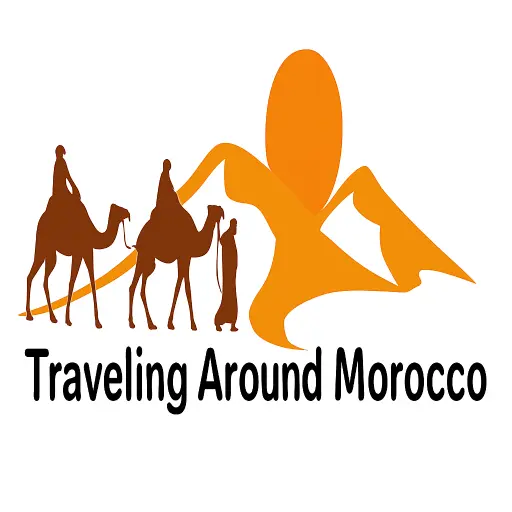
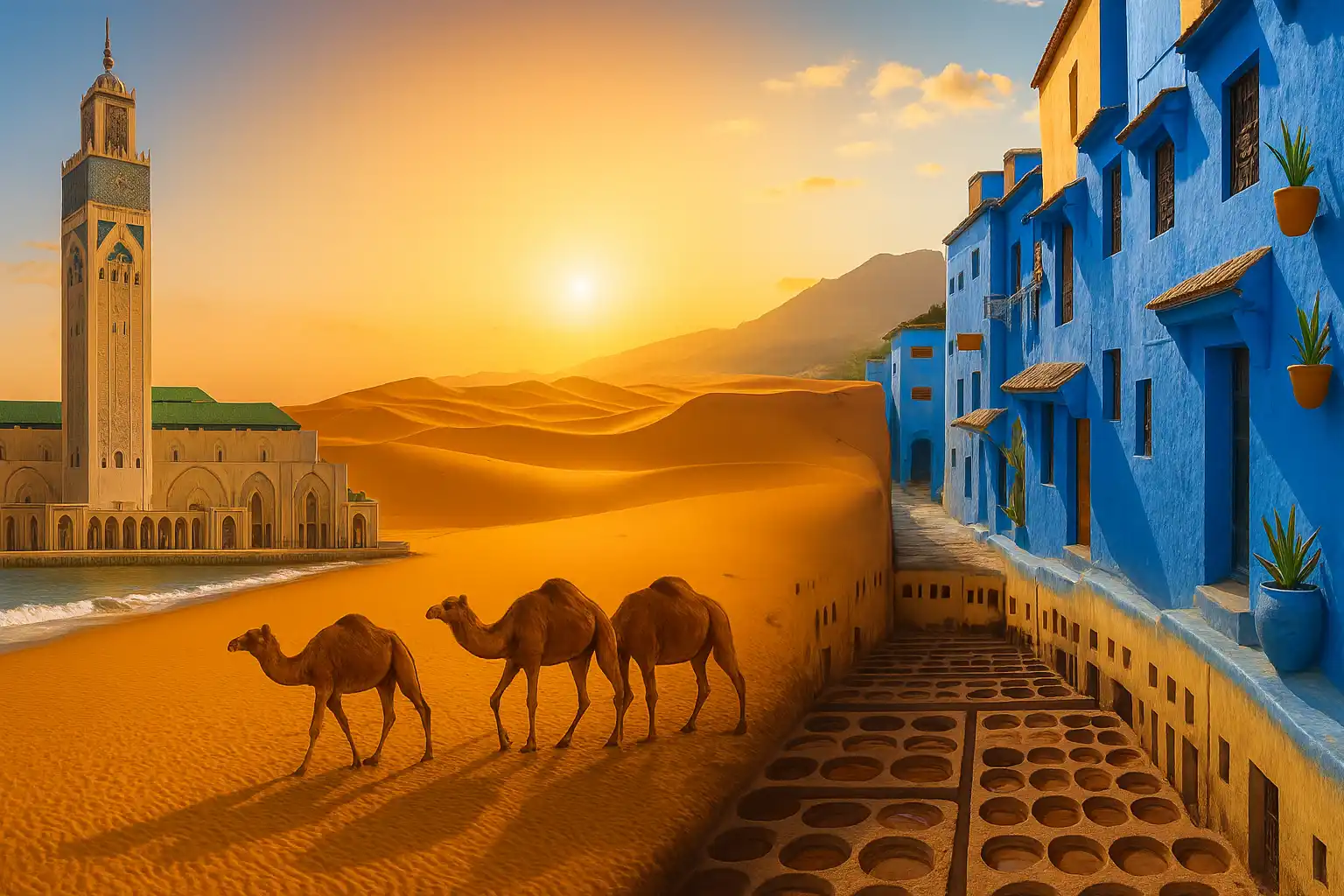
 ️ Easy Access with International Flights
️ Easy Access with International Flights